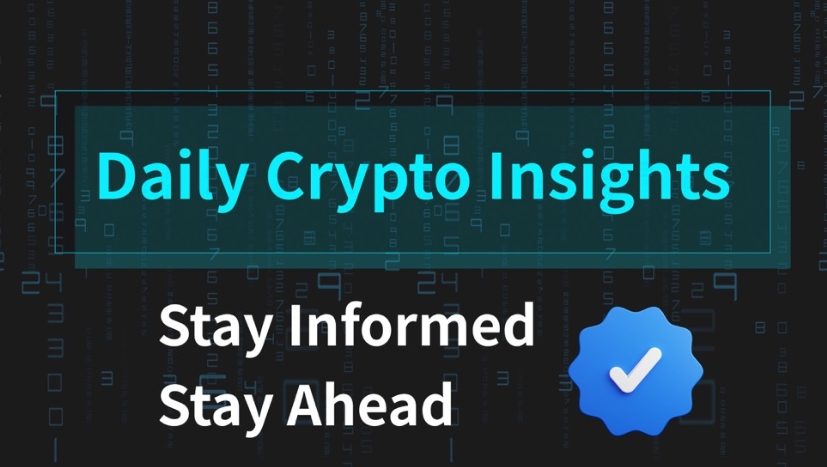Tim Beiko Details Ethereum’s Pectra Upgrade: Smart Accounts and L2 Scaling Ahead
Ethereum's Pectra upgrade arrives May 7, 2025, bringing game-changing improvements like EIP-7702 and enhanced scalability. It's set to reshape how users and developers interact with the network.
Ethereum, the world’s leading blockchain platform, will deploy the Pectra upgrade on its mainnet, scheduled for rollout on May 7, 2025.
The Pectra upgrade enhances the network’s performance and scalability and introduces groundbreaking features, particularly with EIP-7702, making Ethereum more user-friendly and secure.
Ethereum Pectra Upgrade Timeline Confirmed
Tim Beiko, a key figure in Ethereum’s development team, announced on X that the Pectra upgrade will officially launch on the mainnet on May 7, 2025, at epoch 364032. Initially planned for April 30, the upgrade was delayed due to technical issues on the testnet.
This cautious approach shows Ethereum’s commitment to stability and security, ensuring seamless network operation post-upgrade. Coinbase has also begun preparations to support the upgrade, ensuring necessary updates are implemented promptly after Pectra’s launch.
Pectra is Ethereum’s most significant upgrade, incorporating 11 Ethereum Improvement Proposals (EIPs). It builds on major upgrades like Dencun (March 2024), focusing on improving Layer 2 (L2) scalability, optimizing validator experiences, and enhancing user-friendliness.
These changes solidify Ethereum’s leadership while laying the groundwork for decentralized applications (dApps) to thrive.
Tim Beiko: Key Highlights of the Pectra Upgrade
Tim Beiko tweeted an overview of the upcoming Pectra update, with some notable highlights. One of Pectra’s standout features is EIP-7702, which extends standard Ethereum accounts (EOAs) with smart contract functionality.
“EIP-7702 enables use cases like transaction batching, gas sponsorship, or social recovery, all without migrating your assets” Tim tweeted.
Pectra also introduces several improvements for validators. Validators can increase their effective balance up to 2048 ETH, allowing them to accrue staking rewards directly without creating additional validators. Large validators can consolidate balances, reducing bandwidth strain on the P2P network.
 Pectra Validator Efficiency. Source:
Ethereum Foundation Blog
Pectra Validator Efficiency. Source:
Ethereum Foundation Blog
“It also removes the pre-merge PoW follow distance, shortening the delay to process validator deposits, and introduces execution-layer triggerable withdrawals, which enable more trustless staking constructions.” Tim shared.
The Pectra upgrade will double the average number of blobs per block, from 3 to 6. This increase will enable L2 solutions to scale faster, meeting growing market demands. It’s a critical step in Ethereum’s scalability roadmap, especially as L2 platforms like Arbitrum and Optimism continue to grow.
 Blob scaling. Source:
Ethereum Foundation Blog
Blob scaling. Source:
Ethereum Foundation Blog
“Raising this limit was in part possible due to another EIP (7623), which bounds the worst-case block sizes on the network!’ Tim tweeted.
Significance for the Ethereum Ecosystem
Pectra is a strategic leap forward for Ethereum to maintain its dominance in the blockchain space. By increasing blob capacity and improving validator efficiency, Ethereum can handle more transactions per second, fostering dApp growth and attracting new users.
These changes will better position Ethereum to meet future demands while providing an infrastructure for developers.
The Pectra upgrade has garnered positive feedback from the Ethereum community. In Tim Beiko’s announcement, some X users expressed excitement. However, one user noted the need for better public education, stating, “Too bad 99% of people have no idea what that means.”
Disclaimer: The content of this article solely reflects the author's opinion and does not represent the platform in any capacity. This article is not intended to serve as a reference for making investment decisions.
You may also like
SEC says liquid staking and tokens are NOT securities; no registration needed
Share link:In this post: The SEC clarified that certain liquid staking activities in cryptocurrency do not qualify as securities offerings, providing clearer guidance on digital asset regulation. Under SEC Chair Paul Atkins, the agency is adopting a more proactive approach to cryptocurrency regulation, away from the previous “regulation by enforcement” regime. While many now praise the SEC under Atkins for its pro-crypto stance, the agency is effectively divided, with one faction in support of Gary Gensler
OpenAI releases GPT-OSS, its first open-source AI model
Share link:In this post: OpenAI released two open-weight models, gpt-oss-120b and gpt-oss-20b, for public use. The models are downloadable under Apache 2.0 and run on platforms like GitHub, Hugging Face, and LM Studio. OpenAI filtered sensitive data and tested against malicious fine-tuning before release.
New Zealand jobless rate hits 5-year high as economic slowdown deepens
Share link:In this post: New Zealand’s jobless rate rose from 5.1% in Q1 to 5.2% in Q2 2025, marking the highest level since Q3 2020. Total employment declined by 0.1% quarter-on-quarter, matching forecasts, and by 0.9% compared to last year’s quarter. Despite the annual slowdown, wages rose 0.6% over the quarter, and average hourly earnings jumped 1.9%.


